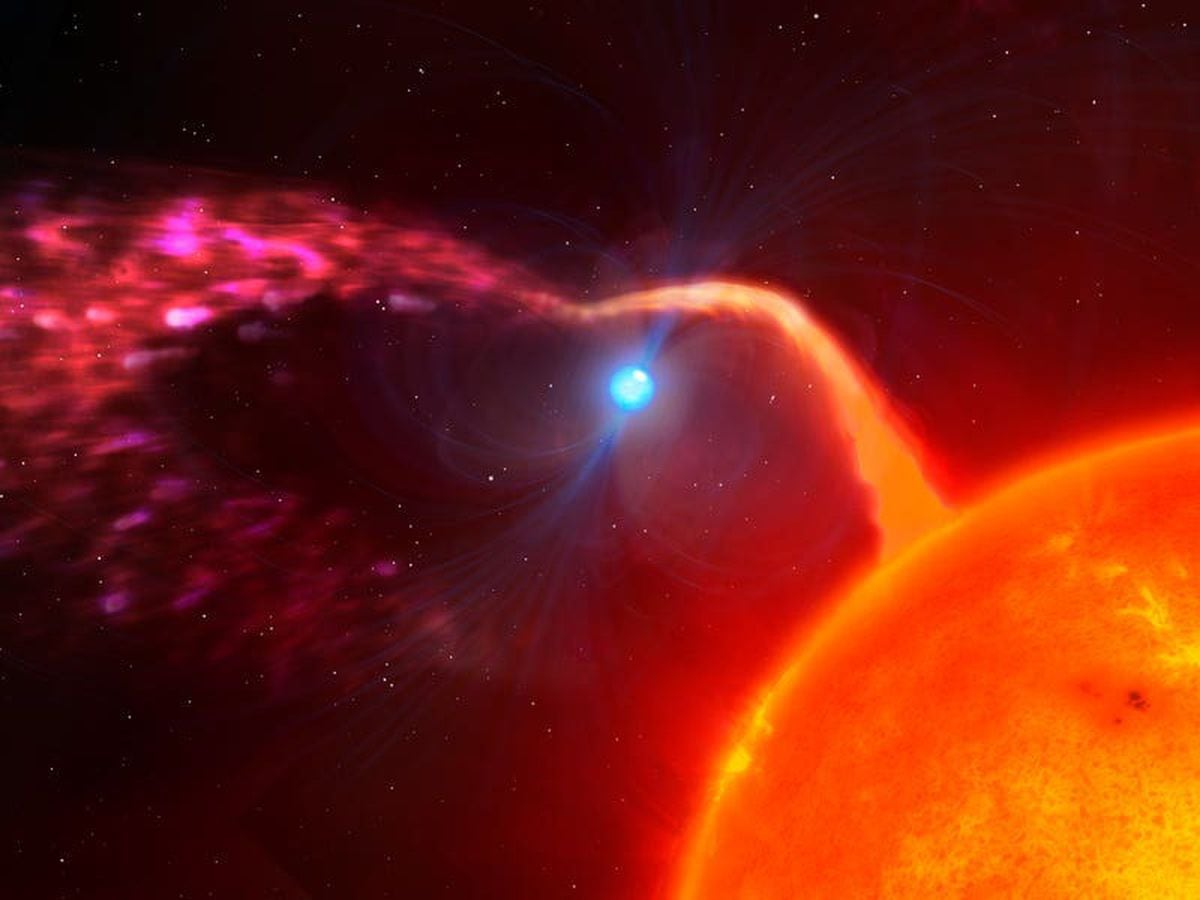Paul M. Sutter is an astrophysicist at SUNY Stony Brook and the Flatiron Institute, host of Ask a Spaceman and Space Radio, and author of “How to Die in Space.” He contributed this article to Space.com’s Expert Voices: Op-Ed & Insights.
White dwarfs are some of the strangest objects in the universe.

The leftover cores from sunlike stars, white dwarfs live for trillions of years through the support of exotic quantum physics. Astronomers recently spotted perhaps the strangest one yet: a dead star the spins twice a second, sucking down material from a nearby companion as it goes.
The cataclysmic variable
When stars like the sun die, they heave off their outer atmospheres into space. After the fury dies down, only the core — a white-hot ball of carbon and oxygen — is left behind. That ball, no bigger than planet Earth, is supported not by the normal nuclear fusion inside living stars, but by the exotic quantum force known as degeneracy pressure.
But most stars do not live alone; most have siblings. And those stars can orbit in silent watchfulness as their companion ends its life in a blaze, leaving behind the corpse that is a white dwarf. Over time, that companion can either begin the final stages of its life itself, or spiral in too closely — close enough to begin a destructive dance.
When that happens, material from the white dwarf’s companion can wind up on the surface of the white dwarf, building a thick layer of hydrogen around its carbon-oxygen body. In this situation and with enough time and enough material, a cataclysm can occur: a flash of nuclear fusion created by the intense pressures in the atmosphere. This flash of energy releases in a blast of radiation, visible from light-years away.
These events used to be called “novas,” but nowadays astronomers prefer the lengthy term “cataclysmic variable star,” because it encompasses a broader class of phenomena (and it sounds cooler.)
The magnetic force field
Recently a team of astronomers spotted a unique cataclysmic variable star dubbed CTCV J2056-3014, or J2056. A binary system sitting about 850 light-years away from Earth, J2056 is known as an “intermediate polar” cataclysmic variable star. To understand that juicy bit of jargon we have to dig into magnetic fields.

White dwarfs are full of charged particles, like most things in the universe. They are also relatively small and spin pretty quickly. The quickly spinning charged particles generate magnetic fields, which fan out far beyond the surface of the white dwarf and affect how the material from its companion star actually makes it onto the surface of the white dwarf.
If the white dwarf star’s magnetic fields are weak, the hydrogen from its companion star settles into a nice, regular disk of accretion, steadily feeding onto the white dwarf. If the magnetic fields are strong, they funnel the gas into streams that wrap around the white dwarf and strike the poles, like a super-charged aurora borealis.
However, if the magnetic fields are middling — not too weak, but not too strong — we get what is known as “intermediate polar.” The word “polar” here refers to the structure of the magnetic field itself. In this case, the magnetic fields aren’t strong enough to completely disrupt the formation of an accretion disk, but they are beefy enough to tangle up the gas near the white dwarf. This prevents a regular, smooth flow of gas, causing the white dwarf to flicker and flare irregularly and unpredictably.
The strange one
Here’s what’s strange about J2056: It’s an intermediate polar system, which means that gas from its companion star can form an accretion disk around the white dwarf, but it has trouble actually making it to the white dwarf’s surface. According to the authors of the study, this white dwarf is only capable of accumulating about the equivalent of Earth’s atmosphere every year, which as these systems go isn’t all that much.
What’s more, J2056 isn’t emitting a lot of X-ray radiation, which is also atypical of these kinds of systems.
Lastly, J2056 is spinning. Fast. In fact, it’s the fastest-known confirmed white dwarf, clocking in at a rotation period of roughly 29 seconds per revolution.
So how did J2056 get so fast? It could be that the configuration of its magnetic fields are just right and therefore able to pull material down onto its surface in quick spurts, accelerating the white dwarf like a stellar carousel. But its magnetic fields aren’t strong enough to slow down the rotation through electromagnetic interactions with the surrounding accretion disk.
Still, the relative dimness of its X-rays and the supremely fast orbit of its companion (it orbits once every 1.76 hours) remain to be explained.
J2056 could represent a brand-new class of cataclysmic variable stars, or it could be just a complete oddball. Either way, understanding how it works could help us to understand how magnetic fields operate around white dwarfs, which is important for understanding how they live and how they are born.
The study has been accepted for publication in The Astrophysical Journal and was posted online to the preprint server arXiv.org.